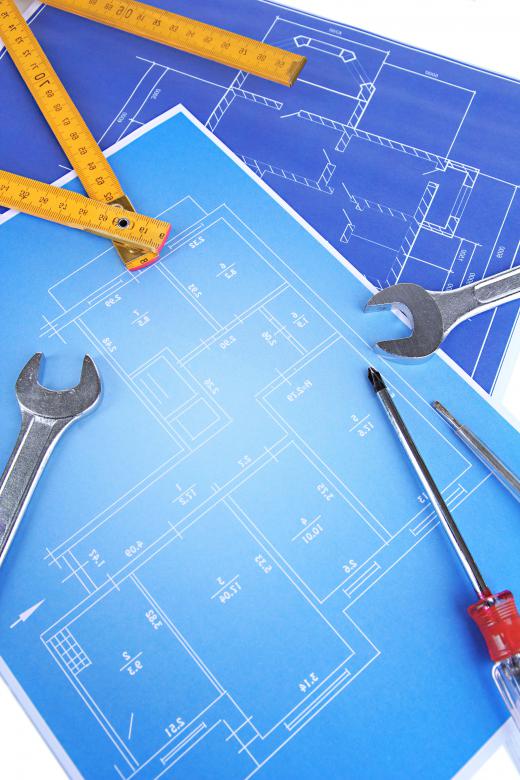Construction documents include all building plans, specifications, and supporting documents used during the completion of a construction project. These documents serve several purposes. First, they help translate the needs to the owner or developer into a buildable format that can be universally understood within the construction industry. Second, they allow the owner to put the project out for bid and to obtain permits from local authorities. They also provide comprehensive instructions to the contractor as to how the project should be constructed.
The creation of a set of documents starts with an owner or developer. This could include a school district, a medical facility, a store operator, or a government agency. When one of these owners needs a new building, he or she will approach an architect to begin design. The architect will draft several sets of building plans, which the owner will modify and approve at each stage before design can continue. The final complete set of plans is typically referred to as the “100% construction documents,” or simply “CDs.”

A set of completed documents is made up of two to three components. The largest is the set of building plans or drawings, which may range from a single sheet to hundreds of pages, and include everything from floor plans to finish selections. Plans for an average-sized project will typically be broken down into several sections. The plans will start with architectural drawings and elevations, which are followed by structural, mechanical and electrical drawings.

Another component commonly included in a set of construction documents is the specifications manual, or “spec book.” The spec book is a written project manual that covers materials and methods that should be used when constructing the project. Those who are new to the construction field often overlook the spec book and focus exclusively on the drawings. This is an act that should be avoided, as the manual often contains information not found on the plans.

In most cases, a completed set of documents will be changed in some manner by the owner or architect as the project is being constructed. Official changes are issued in the form of change bulletins, supplemental instructions, and change directives. These written changes become an official part of the documents, and must be considered the third component that makes up the set.

Once a completed set of construction documents has been issued by the architect and approved by the owner, it is ready for bid. The owner will submit the drawings to interested contractors, who will then estimate the cost to complete the job. In most cases, the lowest bidder is awarded the project, though sometimes schedule or relationships may have an impact as well.
